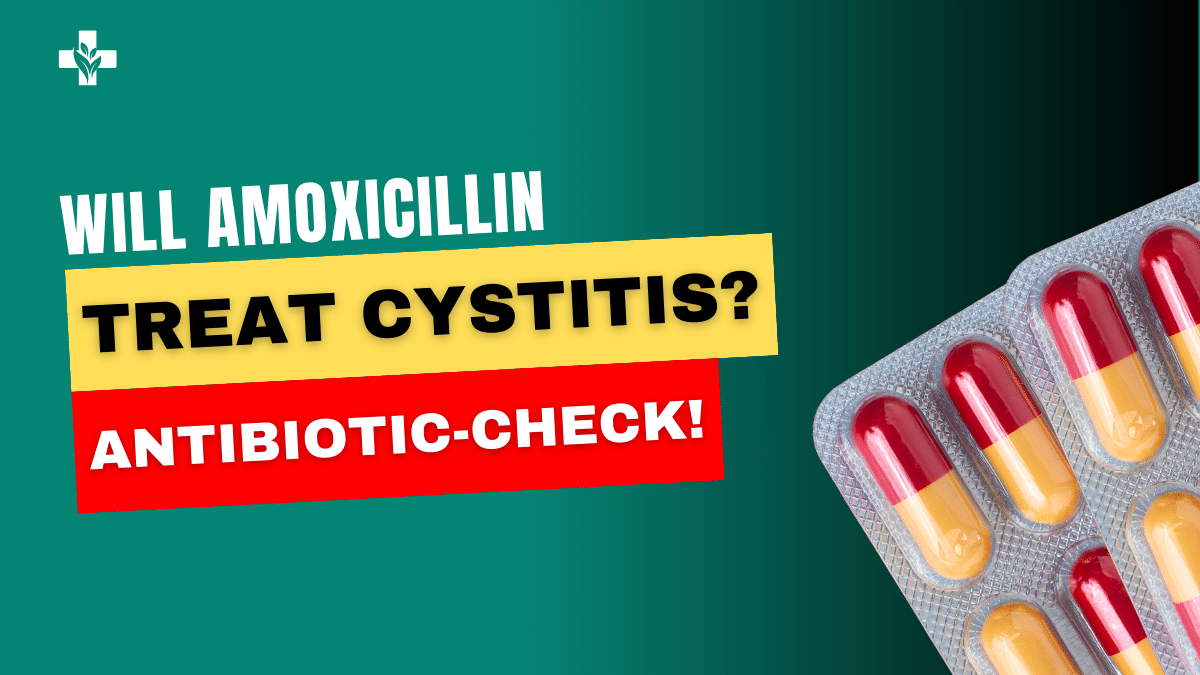Will Amoxicillin Treat Cystitis? Effectiveness and Alternatives Explained
Cystitis, or bladder inflammation, is a common Urinary Tract Infection (UTI) that causes discomfort and symptoms like burning and pain. Such UTIs are more common in women, but regardless of age and gender, anyone can have bladder inflammation. It is usually not serious and mainly caused by bacteria such as E. coli. So, Cystitis is primarily treated with antibiotics. One such option is Amoxicillin.
It is a penicillin antibiotic that can be useful to treat several bacterial infections, including UTIs. However, it is not usually the first-line treatment and its effectiveness in treating Cystitis can be questionable for certain bacteria. Why is it so? Will Amoxicillin treat Cystitis or not? Read on to find out.
Amoxicillin and Cystitis
Amoxicillin is effective against Urinary Tract Infections (UTIs) and is hence also used to treat Cystitis. However, it is not the first-line treatment, as some bacteria are resistant to it, reducing the range of treatment. So, instead of using Amoxicillin alone, it is used in combination with other ingredients to improve its effectiveness.
Augmentin, or Amoxicillin and Clavulanic acid, is an effective combination antibiotic. Amoxicillin fights and kills bacteria, while Clavulanic Acid increases its effectiveness, making it suitable for more types of bacteria.
Augmentin is also FDA-approved for treating UTIs. It is also not a first-line treatment but is effective against more types of bacteria than Amoxicillin. It is prescribed when other recommended antibiotics, like Fluoroquinolones, do not work.
Amoxicillin for Cystitis dosage
Amoxicillin dosage for Cystitis can depend on the severity of the infection and your doctor’s prescription. The usual recommended dosage of Amoxicillin for adults is 250 mg orally every 8 hours or 500 mg every 12 hours for mild infections. For serious infections, the dosage can go up to 500 mg orally every 8 hours or 875 mg every 12 hours.
Some studies have also explored other dose regimens. A study by R R Bailey found that a single oral dose of 3 grams for adults and 100 mg/kg for children is as effective as a five to seven course of Amoxicillin. Another study found that 250 thrice a day for a week achieved satisfactory cure rates in UTIs.
On the other hand, the usual Augmentin dosage for UTIs is 250 mg orally every 8 hours or 500 mg every 12 hours for 3 to 7 days, which can go up to 500 mg every eight hours or 875 mg every 12 hours. A study by A Leigh also found Augmentin effective for treating UTIs with minimal gastrointestinal side effects.
How long does Amoxicillin take to work for Cystitis?
Amoxicillin is rapidly absorbed and starts working in 1-2 hours. However, you will notice changes in symptoms after 24-72 hours. Similarly, Augmentin starts working in one hour, but it may take 48 hours for you to feel better. Usually, one to three days of antibiotic treatment is enough to relieve symptoms like pain or burning sensation.
You can buy Augmentin 375 mg at reasonable prices from WowRxPharmacy.
Amoxicillin side effects
Using Amoxicillin can cause some mild to severe side effects. You should consult your doctor if you experience:
- Nausea
- Vomiting
- Changes in taste
- Headache
- Diarrhea, which may be watery or bloody with fever and cramps
- Rashes
- Blisters or hives
- Itching
- Wheezing
- Swollen face, eyes, tongue or lips
- Difficulty breathing or swallowing
Amoxicillin-Clavulanate or Augmentin also has similar side effects.
Who should not take Amoxicillin
You should not take Amoxicillin if allergic to penicillin-antibiotics or any other medicine. It is also not suitable for people with liver and kidney problems. You should also inform your doctor about your due or recent vaccinations and medication history to avoid complications.
Amoxicillin for Cystitis alternatives
Besides Amoxicillin or Amoxicillin-Clavulanate, your doctor can prescribe other medications according to the bacteria resistance and effectiveness. Some of the commonly used antibiotics for Cystitis are:
- Trimethoprim and Sulfamethoxazole combination
- Trimethoprim
- ?-lactams such as Cefpodoxime and Cefixime
- Fluoroquinolones such as Ciprofloxacin and Levofloxacin
- Nitrofurantoin macrocrystals
- Fosfomycin tromethamine
You can buy Ciplox 750mg and Levoflox 750mg from WowRxPharmacy at best prices.
Conclusion
Amoxicillin can treat Urinary Tract Infections like Cystitis. However, it is not the first-line treatment. Many bacteria are also resistant to it. So, your doctor may prescribe Augmentin, a combination of Amoxicillin and Clavulanic acid, instead. The right dosage of Amoxicillin will depend upon the severity of the infection. It is usually taken 250 to 500 mg a day.
If you use Amoxicillin, you may observe mild to serious side effects like nausea, diarrhea, and difficulty breathing. You should report such symptoms to your doctor immediately. You should also avoid Amoxicillin if you have an allergy to penicillin antibiotics, liver and kidney problems, or a recent/due vaccination. Also, discuss your medications with a doctor before administrating Amoxicillin.
If Amoxicillin is unsuitable for you, your doctor may prescribe other effective and common Amoxicillin alternatives like Ciprofloxacin and Trimethoprim. With the right medicine and dosage, Cystitis symptoms can be relieved within a few days without major complications.






